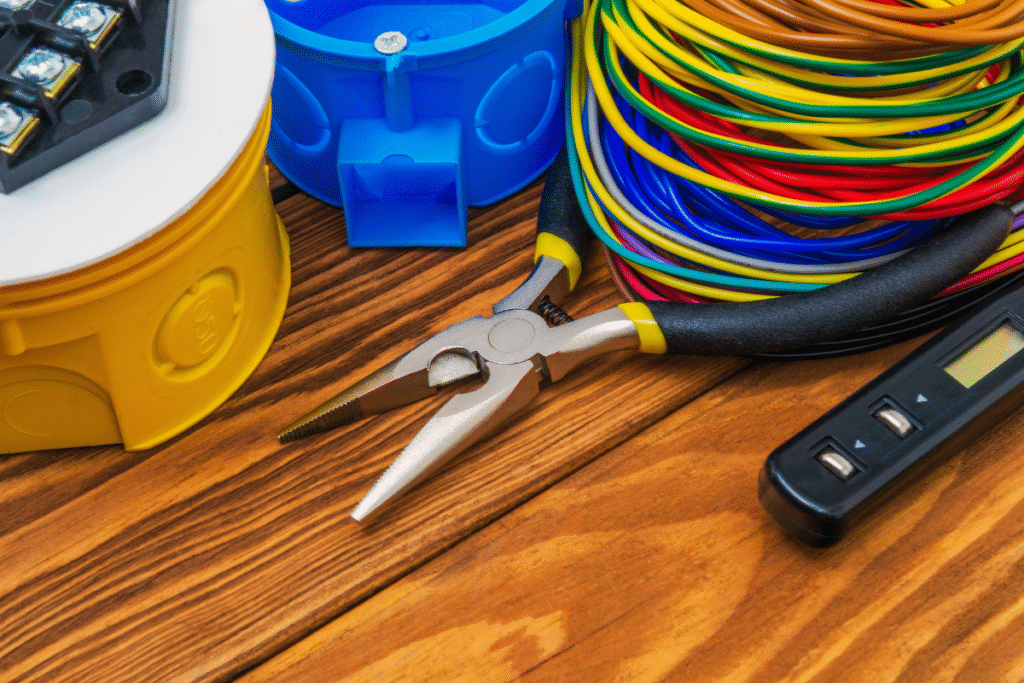Selecting the right electrical cable types plays a essential function in ensuring protection during performances and efficiency in any creation or protection venture. Whether it be changing a room, rewiring, or setting up a workshop, this selection is one that should not be forgotten. In 2025, with smart home technology and high power-consuming appliances gradually becoming mainstream, you want your cable selections to be as modern as the devices they’re serving.
Now let us break down all the essentials you need to know about the types of electrical cable and how to choose the right one.
Understanding Electrical Cable Types
Electrical cable types consist of conductors insulated to protect and guide their flow of electricity. The choice of a cable must take into account the intended level of voltage flow and application.
- Classifications generally include
- Voltage Rating (low, medium, high)
- Insulation type (PVC, XLPE, RUBBER)
- Application (lighting, power supply, appliances, outdoor use)
- Core Configuration (single-core, multi-core)
The choice affects not just performance but also the safety and longevity of your wiring.
Common Types of Electrical Cables
Here are the most commonly used electrical cable types in residential and commercial setups:
- Twin and Earth Cable: Workhorse used for domestic circuits combining live, neutral, and earth conductors.
- Armored Cable (SWA): Strong and proof against elements, it’s far, therefore, ideal for outdoor or underground wiring.
- Flexible Cable: Used for portable equipment and devices to be easy to bend and maneuver.
- Coaxial Cable: Used for TV and network wiring.
- Data Cable (CAT5E/CAT6): For intelligent network and residential systems.
Your correct choice ensures that each one has their application and functional law.
Electrical Wire Types and Uses
The Electrical wire types can differ from each other not only in their external protection but also in their composition and functionality. Here are some types of electrical cables commonly seen:
- Unique wire: A driver, easy to install, ideal for small circuits.
- Wire of various nuclei: Multiple conductors, used for larger systems or where signal segregation is required.
- Solid Wire: More durable, used in permanent installations.
- Film wire: Flexible, used in areas where movement or flexion occurs.
Your type of wire should always correspond to the task at hand to avoid inefficiencies or future problems.
Power Cable Type and Their Applications
Power electrical cable types are designed especially for high-voltage transmission and built to support pressure, heat and environment. Different types of power cables include
- Low-voltage cables (PVC): Used for most residential wiring.
- High-voltage cables: Used for commercial or industrial facilities.
- Underground cables: Heavily insulated and armored for subsoil applications.
- Overhead cables: Used for external pole-to-building connection.
Ensure that the strength electrical cable types you choose is rated for your voltage and environmental needs.
Factors to Consider Before Choosing a Cable
Things you must hold in your thoughts before shopping for/putting in electrical cable types.
- Current Load: Match the cable’s ability to your tool’s electricity draw.
- Length of Cable Run: Longer distances can also require thicker cables to keep away from voltage drop.
- Environmental Conditions: Weather resistance, moisture protection, and temperature variety.
- Compliance Standards: Cables should be used as per standards set by regulatory bodies (BSI, IEC, etc.).
- Installation Type: Different protection levels depend on whether cables will be surface mounted, flush mounted, or buried.
Proper cable selection prevents fire hazards, device malfunction, and electrical faults.
Tips for Homeowners and DIY Installers
If you are not an electrician, wiring may seem a bit intimidating. Here are some quick tips for beginners:
- Label Everything: It helps avoid mistakes when connecting or troubleshooting later.
- Don’t Overload Circuits: Always calculate total load before connecting multiple devices.
- Use the Right Tools: You need a good pair of insulated cable cutters, an insulation stripper, and a voltage tester.
- Don’t Use Sharp Bends: Allow flexibility while preventing conductor damage.
- Ask for Help: When unsure, get an expert electrician to go through your option.
Small mistakes in cable installation can lead to big problems. Keep your safety above all else.
Conclusion
In essence, the knowledge of electrical cable types is not only important for engineers or electricians but also for every other person involved in upgrading and maintaining their home in 2025. be it powering smart devices, illuminating an outdoor porch, or constructing an addition—the right choice of electrical cable types guarantees everybody’s free and safe flow.
With the plethora of cables available in the market today, having one to rely on would make a world of difference. Trust Travis Perkins to deliver the best high-quality electrical cables for any home and project.
FAQs
- How do I choose the right electrical cable types?
Consider application, voltage, current load, cable run length, and environment of installation. Pick a cable with insulation suitable for the purpose and certified. - What is the rule of thumb for cable selection?
As a general rule of thumb, for each 1 kW of power, take a cable of not less than 4-5 amp capacity. Otherwise, it is wise to calculate the accurate current load and corroborate with the specifications.

